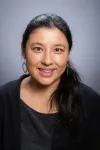(Press-News.org)
The Keck School of Medicine of USC has received $2 million from the California Institute of Regenerative Medicine (CIRM) to further augment its newly launched cGMP Laboratory, a state-of-the-art facility designed to advance early-stage research into clinically viable cell and gene therapies. To expedite the translation of these therapies from the lab to the clinic, the facility needs advanced technological know-how, streamlined operations and strict protocols for developing and testing these products, all of which the CIRM grant will help fund.
Cell and gene therapies involve modifying the activity of the body’s own cells in order to combat diseases such as cancer and autoimmune disorders. Their production requires specialized, highly controlled, contamination-free laboratories to ensure the quality and safety of the final product. The USC/CHLA cGMP facility, a joint effort between the Keck School of Medicine, Keck Medicine of USC and Children’s Hospital Los Angeles, was built to meet the Food and Drug Administration’s (FDA) good manufacturing practice (cGMP) standards for production of these advanced therapies.
Over the next two years, the funds will drive the adoption of an advanced electronic quality management system (eQMS), the development of optimized cell therapy manufacturing processes and the training of the next generation of workforce talent in the field.
“As a team passionate about innovation, we are always on the lookout for advancements that add value and elevate our efficiency,” said Mohamed Abou-el-Enein, MD, PhD, MSPH, associate professor of clinical medicine, executive director of the USC/CHLA Cell Therapy Program and founding director of the cGMP lab. “These upgrades are stepping stones, bringing us closer to our ultimate goal: delivering our life-saving scientific discoveries to patients as quickly as possible.”
State-of-the-art technologies
Abou-el-Enein and his team will use the funds to enhance the facility’s operations across several domains. From the outset, the facility was designed to operate using the most recent technologies; for that reason, an eQMS was specifically tailored to support the facility's operations. The grant will enable the lab to expand and sustain this system. By shifting away from traditional paper-based methods, the eQMS guarantees operational consistency, minimizes human error, enhances efficiency, and results in long-term cost savings.
The CIRM grant is set to enhance the USC/CHLA cGMP lab's capabilities in pioneering cell therapy methods. With a focus on optimizing both viral and non-viral manufacturing techniques, the lab aims to be a front-runner in innovative treatments.
Viral vectors, created from viruses modified to carry specific genetic material into cells, will be produced in-house. Instead of causing disease as viruses naturally do, their purpose is to equip cells with the ability to combat illnesses. Creating them in-house will help the lab overcome cost and supply chain challenges that can result in manufacturing bottlenecks. The team is also exploring alternative non-viral methods for delivering genetic material to cells, widening the scope of therapies that can be developed in the facility.
The team will share the optimized protocols they develop across the CIRM manufacturing network. Sharing experimental and manufacturing protocols not only accelerates the development of groundbreaking treatments, but also fosters collaboration and knowledge-sharing among research communities, solidifying the lab’s role in advancing medical science.
Growing the workforce
The remaining funds will support training efforts to help develop a workforce for cell therapy manufacturing. The highly specialized work requires significant knowledge of FDA regulations, including how to properly conduct and document all activities in the lab.
Through partnerships with the USC CIRM COMPASS Scholars Program and the Alliance for Regenerative Medicine’s GROW RegenMed Internship Program, Abou-el-Enein and his team will provide training in cell therapy manufacturing and testing to students from underrepresented racial and ethnic minority groups. They will also work with the University of California, Irvine and other institutions to improve training options for undergraduate students.
“Our initiative is deeply rooted in collaboration, establishing meaningful partnerships with academic and industry leaders both within and beyond California.” Abou-el-Enein said. “This cooperative approach is designed to broaden patient access to innovative treatments and solidify California's reputation as a key hub for delivering impactful cell-based therapies.”
About this research
This work is supported by the California Institute of Regenerative Medicine [INFR5-14667].
END
HOUSTON (October 4, 2023) – Texas Children’s Hospital is proud to announce that its Adolescent Bariatric Surgery Program has received national accreditation from the Metabolic and Bariatric Surgery Accreditation and Quality Improvement Program (MBSAQIP).
Texas Children’s Hospital The Woodlands is the only Bariatric Surgery Center in the state of Texas that serves to an adolescent-only patient population with a multidisciplinary clinical staff who is certified to meet the surgical, medical and psychological needs of ...
Some of the thinnest materials known to mankind may provide solutions to scientists in their quest to curb the effects of global warming.
Known as MXene and MBene compounds, these substances are only a few atoms thick, making them two-dimensional. Because of their large surface area, the materials have the potential to absorb carbon dioxide molecules from the atmosphere, which could help reduce the harmful effects of climate change by safely sequestering carbon dioxide.
In a paper published Oct. 4 in the journal Chem, UC Riverside professor Mihri Ozkan and her co-authors explain the potential of MXenes and MBenes in carbon capture technologies.
“In this review, ...
CORVALLIS, Ore. – Fossil researchers have discovered a novel genus and species of tiny wasp with a mysterious, bulbous structure at the end of each antenna.
The female micro-wasp was described from 100-million-year-old Burmese amber in a study led by George Poinar Jr., who holds a courtesy appointment in the Oregon State University College of Science.
Poinar and Fernando Vega, an independent researcher based in Silver Spring, Maryland, have some ideas about the “clouds” on the ...
Tirzepatide is as effective at treating early-onset type 2 diabetes (T2D), a more aggressive form of the condition that normally responds less well to treatment, as it is at treating T2D diagnosed later in life, new research being presented at the Annual Meeting of the European Association for the Study of Diabetes (EASD) in Hamburg, Germany (2-6 Oct) has found.
Tirzepatide belongs to a new class of drugs that mimic the effect of two hormones involved in blood sugar control and appetite suppression, ...
New research being presented at the Annual Meeting of the European Association for the Study of Diabetes (EASD) in Hamburg, Germany (2-6 Oct) has identified a range of characteristics associated with a higher risk of sudden cardiac arrest in individuals with type 2 diabetes.
These include the some commonly prescribed antibiotic and antipsychotic drugs, prokinetics (drugs used to treat gastrointestinal symptoms such as nausea and vomiting) and low fasting blood sugar.
Sudden cardiac arrest (SCA) is a leading cause of death. ...
New research presented at this year’s Annual Meeting of The European Association for the Study of Diabetes (EASD), Hamburg (2-6 Oct), reveals a marked increase in several common conditions in the years leading up to, and immediately prior to, type 2 diabetes diagnosis, suggesting considerably earlier diagnosis might be possible in some patients.
“These novel insights into the onset and natural progression of type 2 diabetes, suggest an early phase of inflammation-related disease activity long before any clinical diagnosis of type 2 diabetes is made”, says senior author Dr Adrian Heald from Manchester ...
At this year’s Annual Meeting of the European Association for the Study of Diabetes (EASD) in Hamburg, Germany (2-6 Oct) experts will discuss if lasting remission from diabetes is feasible in the real-world setting.
Professor Roy Taylor of Newcastle University, Newcastle, UK, will be speaking in support of the motion
Professor Taylor will argue that through a series of studies in which people with type 2 diabetes were put on low calorie diets, he has shown that lasting remission of type 2 diabetes is indeed feasible in the real world.
He will begin ...
Precision medicine is part of the logical evolution of contemporary evidence-based medicine that seeks to reduce errors and optimise outcomes when making medical decisions and health recommendations. Diabetes affects hundreds of millions of people worldwide, many of whom will develop life-threatening complications and die prematurely.
“Diabetes recommendations often focus on what works well for the average person. However, because diabetes is an incredibly heterogeneous disease, few people are Mr or Mrs “average” and one-size-fits-all ...
In a first-of-its-kind study, researchers using wastewater surveillance over conventional indicators have predicted the start of the annual respiratory syncytial virus (RSV) season 12 days early, providing more lead time for hospital preparedness and the timely initiation of RSV prevention therapy provided by the province for at risk-infants and young children.
Published in Frontiers in Public Health, the study is the first to describe the relationship between wastewater measurements and clinical data for RSV and to use near real-time wastewater measurements to accurately identify the start of the RSV season.
Working in close collaboration with CHEO Research Institute (RI) ...
The burden of non-communicable diseases like hypertension and diabetes is increasing globally, especially in low-income and middle-income countries where they occur alongside epidemics of communicable diseases like HIV. A large public health survey in South Africa led by Emily Wong, M.D., has assessed the multimorbidity health needs of individuals and communities in rural KwaZulu-Natal and established a framework to quantify met and unmet health needs for individuals living with infectious and non-communicable diseases. The study is published in The Lancet Global Health.
“Applying ...


